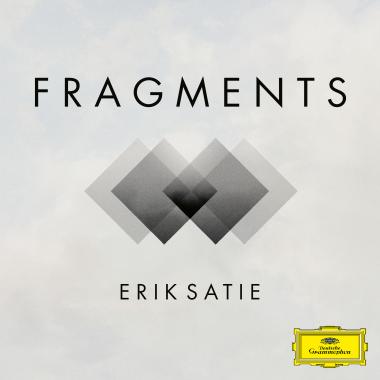
Back in the 1960s, Erik Satie enjoyed a brief vogue on recordings, probably on the grounds of being a rebel and a nonconformist — which would appeal to hippies and other inhabitants of the counterculture (who ironically turned out to be conformists of their own kind). Nowadays, Satie’s reputation would seem to be rooted in what his music actually is — simplicity, repetition, tonality — as opposed to his image. Those qualities fit in with the minimalist manifesto and beyond, into the genres of ambient music and electronica that straddle several categories.

That’s where Fragments (Deutsche Grammophon) comes in, an album in which a dozen different composers and groups invent their own electronic fantasias from fragments of various pieces by Satie. The results can span all three of the genres just mentioned, and they originally came out online over the course of a year, one composition per month — a concept that DG intends to repeat with other composers. The instrumentation is largely electronic, with some acoustic instruments. Some pieces receive multiple interpretations; Gymnopédie No. 3 goes around twice, and Gnossienne No. 1 gets three reworkings.
The opening selection, the second “Danses de travers” from Pièces froides, adapted by a duo of brothers (Rafa and Leo) called Two Lanes, sets the pattern of softly percolating electronic grooves with a strong bass punctuating the track. The bass beat may be heavy, or it may be light or not present at all; textures may be clear, or they may be foggy. Some have a somewhat harder edge than others — the take on Gnossienne No. 1 by Grandbrothers, for one. But the overall effect of these tracks is largely the same — a soporific dreamscape of repetitive patterns that can be listened to with some concentration (although that’s hard at times), overheard while doing something else, or simply ignored. Satie wouldn’t have cared what you might do with them, probably.
The reworking I keep coming back to the most is also the longest — Dominik Eulberg’s euphoric take on the famous Gymnopédie No. 1, which has perhaps Satie’s best tune. This track runs seven-and-a-half minutes, but as far as I’m concerned, the running, stuttering electronic rhythm could go on and on, as long as the many repetitions of Satie’s Vexations, even.
Granted, there may be a crying need for this kind of stuff as a soothing sanctuary from a world that often seems to be spinning out of control. Not long ago, on a whim, I sampled bits of music from every album that had been released on DG in a particular month. Almost every selection was in a relaxed, spare, simple, chill-out mood. While this recording might be the product of the same school of analytics-based marketing, it’s more engaging on multiple levels of attention than anything I heard that given month.



